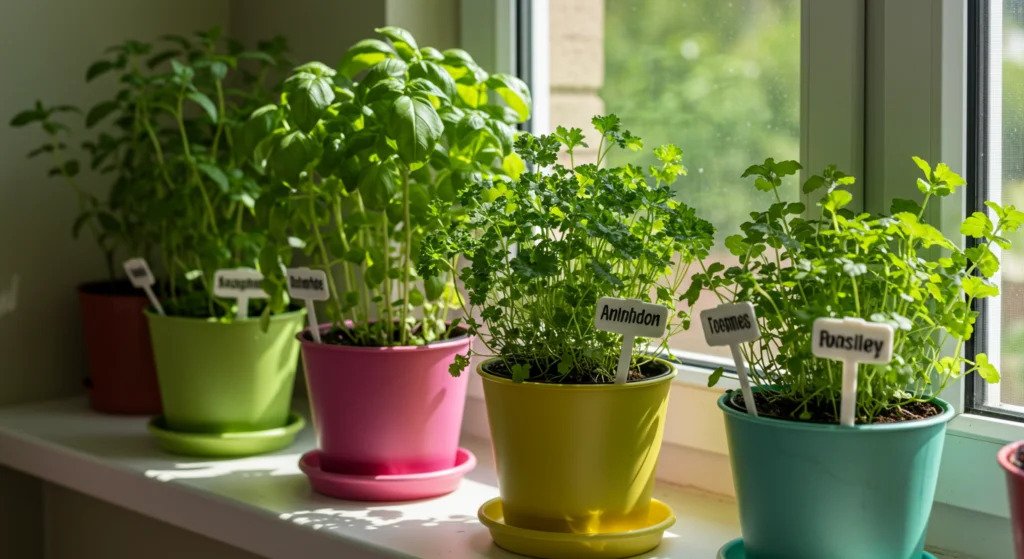
Introduction to Indoor Herb Gardening
An indoor herb garden offers a steady supply of fresh herbs all year. It brings nature indoors and saves trips to the store. Many herbs grow well in limited spaces and need simple care. This guide explains how to make an indoor herb garden step by step.
Choose the Right Location for Your Herb Garden
Pick a sunny spot near a window that receives six hours of sunlight each day. A south-facing window works best for growing herbs indoors. If natural light is low, place a grow light above the plants. Herbs grow well in bright, warm, and ventilated spots.
Select the Best Herbs for Indoors
Choose herbs that grow well in containers and indoor environments. Popular indoor herbs include basil, mint, parsley, thyme, oregano, and chives. Pick herbs that you use in cooking to make your garden more useful. Start with three to five herbs for easier care and better focus.
Use the Right Containers and Soil
Pick containers with drainage holes to prevent soggy roots and plant diseases. Use pots made of clay, plastic, or ceramic for growing herbs. Select a high-quality potting mix that drains well and supports root growth. Avoid using garden soil because it retains too much moisture indoors.
Plant Your Herbs Carefully
Fill containers with the potting mix and leave one inch at the top. Place seeds or seedlings in the soil and press gently. Water the herbs slowly after planting to settle the soil. Label each pot for easy herb identification and organized care.
Water Your Herbs the Right Way
Check the soil before each watering to avoid overwatering the herbs. Insert your finger into the soil; water only when the top inch feels dry. Use a watering can with a narrow spout for better control. Ensure excess water drains out from the bottom.
Provide Light and Temperature Control
Place your herbs in a bright area and turn pots daily for even light exposure. Keep the indoor temperature between 65°F and 75°F during the day. Avoid placing herbs near heaters, air conditioners, or cold windows. Use a grow light for herbs that need extra light during winter.
Prune and Harvest Your Herbs Regularly
Trim herbs often to promote bushy growth and prevent flowering. Use clean scissors to cut leaves just above a pair of leaves. Never remove more than one-third of the plant at one time. Harvest herbs in the morning for the best flavor and aroma.
Avoid Common Indoor Herb Problems
Watch for pests like aphids, whiteflies, and spider mites. Wipe leaves with a damp cloth or use natural sprays to control pests. Prevent mold and rot by watering less and increasing airflow. Remove any dead leaves or yellow parts to keep plants healthy.
Conclusion: Enjoy Fresh Herbs Year-Round
Making an indoor herb garden is easy with the right steps and care. Choose good herbs, use proper soil, and provide enough light. Water carefully, prune regularly, and watch for pests. With time and attention, your indoor herb garden gives flavor and beauty to your home.

